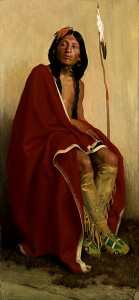 The Pueblo Indian history is still a bit mysterious but what we do know of the culture shows a people of progression, ingenuity and resourcefulness. Pueblo Indians are one of the oldest cultures in the United States with an American Indian history that dates back more than 7,000 years.
The Pueblo Indian history is still a bit mysterious but what we do know of the culture shows a people of progression, ingenuity and resourcefulness. Pueblo Indians are one of the oldest cultures in the United States with an American Indian history that dates back more than 7,000 years.
Their ancestors were called “Anasazi” which translates to “ancient ones” or “ancient enemy.” The Pueblo Indians received their name from the Spanish in the 16th century. When translated from Spanish their name means “village dweller.”
The most important development in Pueblo Indian history was the changeover from nomadic to stationary lifestyle when they began settling the Southeastern Colorado, New Mexico, Utah and Arizona area, also known as the four corners region.
Perhaps the best look into the Pueblo Indian history is at the Mesa Verde adobes and Concha Canyon adobes. This is where the Pueblo Indians began constructing dwellings from natural caves, or on top of mesas, which were all part of the rocky terrain and canyons of this region. Ahead of their time, these villages resembled modern-day apartment complexes with interconnecting rooms and homes that were shaped from stone and adobe.
The homes were often decorated with handprints and patterns. Characteristically these pueblo homes had flat roofs made of stone, adobe and wood. The rooftops proved to be ergonomic during the fall season when crops were harvested and lain to dry in the heat of the sun.
Around the time Pueblo Indians became stationary they also began producing pottery, weaving baskets and creating other artifacts. The men were master basket weavers while the women honed their skills in pottery. The women Anasazi made clay pottery called wares, which were adorned with different symbols and meanings. It is through these symbols and wares that we have greater insight into the Pueblo Indian history. The different types of pottery represented each tribe’s historical timeline, which archeologists now use to study Pueblo Indian history.
Turquoise was also an important part of the Pueblo Indian history. The natural stone was used in jewelry that was worn for different religious ceremonies. The stone was also used for trade between tribes for food and other necessities.
At this time in Pueblo Indian history they also began to develop their agricultural skills such as raising livestock and growing crops. The Pueblo Indians developed intricate irrigation systems using bone and wood.
Of the 21 Pueblo tribes that exist today, the most commonly known are Taos, Acoma, Zuni and Hopi. The Pueblo Indian history was a culture that developed some of the most complex systems and ideas that we continue to use and develop today.
